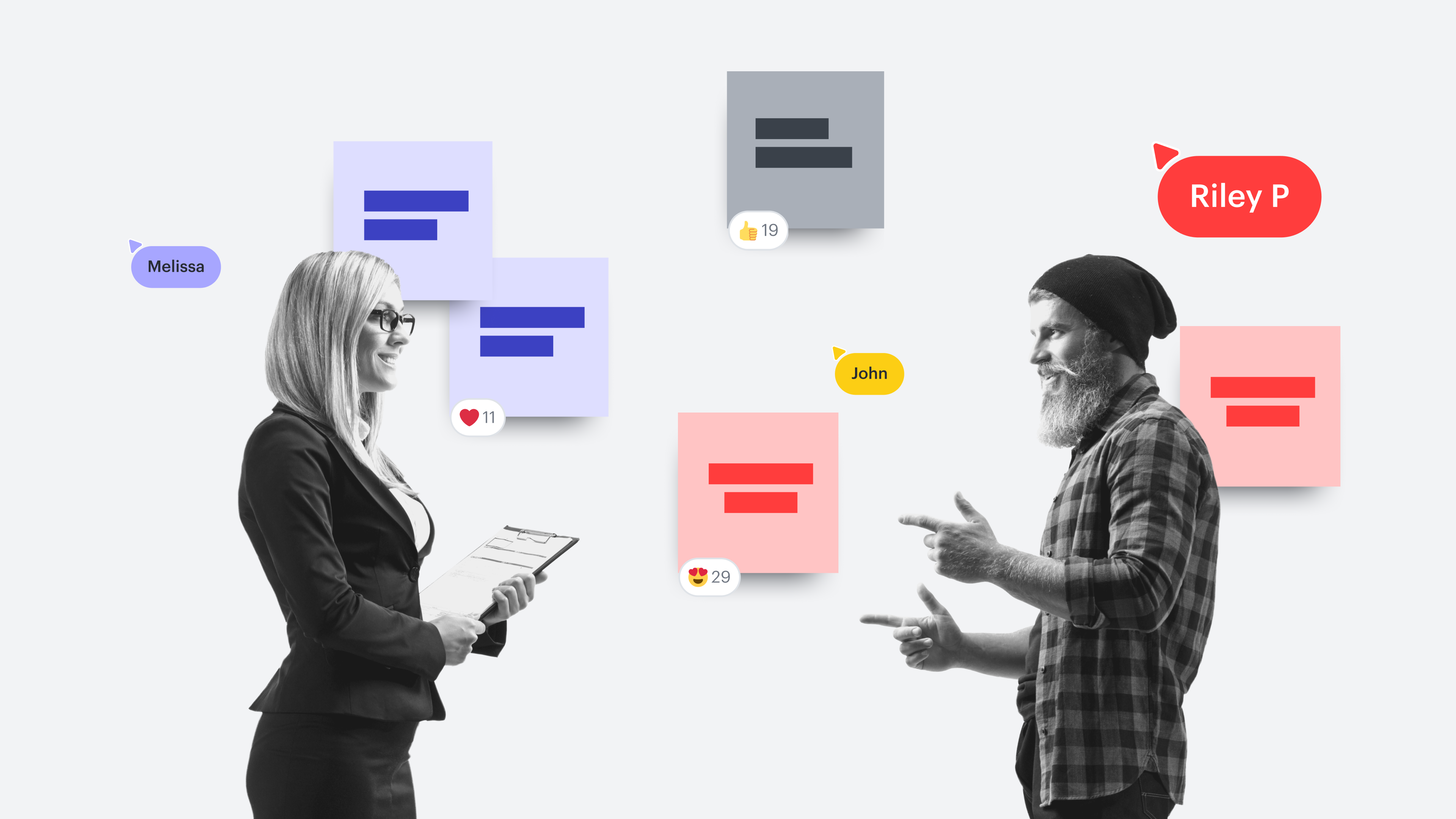
A guide to utilizing the power of AI for mind mapping
Reading time: about 6 min
Artificial intelligence (AI) is one of the fastest-growing technologies in the world. AI has applications in various fields and industries including healthcare, finance, transportation, customer service, visual arts, music, and more.
In this post, we’ll discuss how AI tools can help you in your process of creating mind maps. Continuous improvements to AI algorithms and deep learning techniques have enhanced data analysis and decision-making. When combined with human thinking and the creativity of mind mapping, AI helps you to quickly analyze, organize, and structure your thoughts and ideas so you can make informed decisions.
What is mind mapping with AI?
A mind map is a visual representation of your thoughts, ideas, concepts, and information that come from a central theme or topic. It’s a visual brainstorming tool that more closely aligns with how our brains work—thoughts and ideas branch out from the central theme in a non-linear fashion. Each branch represents different ideas or subtopics that relate back to the central topic. Additional branches can be added to each branch to further explore each related subtopic.

Learn all about intuitively creating mind maps with Lucid.
Go nowMind mapping with AI integrates AI tools and techniques with the creative human thought process of creating mind maps. Using AI tools in your mind mapping process can help you to organize and structure your ideas branching from the central topic. AI tools can automatically arrange information into categories, make intelligent suggestions that help you see and understand connections among multiple ideas, and find gaps that might need to be filled.
How does AI enhance the mind mapping process?
You might wonder how AI is able to automate some of your mind mapping processes and make intelligent suggestions to help you organize your thoughts more effectively. It involves using data and algorithms that help AI systems learn from examples rather than programming them for each specific task. This is known as machine learning (ML).
Essentially, the ML algorithms let computers look for patterns and relationships in the data they analyze. The AI systems learn from the data, which lets them make informed decisions and predictions. The more data and examples they have to draw from, the more accurate AI systems are.
The main types of ML algorithms are:
-
Supervised learning: Labeled data is used to train the model. This lets the system learn how to map from input data to output labels, which enables the AI to make predictions and classify data.
-
Unsupervised learning: The model is trained using unlabeled data. The goal is for the AI system to discover patterns and structures in the data to structure similar data points accurately.
-
Reinforcement learning: An agent is trained to interact with an environment. It then learns which actions to take through trial and error and from feedback in the form of rewards or penalties based on the actions it takes.
-
Ensemble learning: This type of ML algorithm combines multiple models in an effort to create a stronger model that improves overall predictive performance.
Use Lucidspark’s AI features to produce more ideas for your mind maps
Lucidspark uses machine learning and collaborative AI to help you quickly and intuitively create mind maps.
Collaborative AI brings together collaborative tools like Lucidspark and AI systems to facilitate work and interaction between humans and machines. Bringing these two worlds together leverages the strengths of human and AI systems to strengthen teamwork, increase productivity, and enhance decision-making processes. Lucid’s Collaborative AI can help you brainstorm ideas and summarize themes.

For example, if your central topic is modes of transportation, the AI system might suggest branches such as automobiles, airplanes, trains, boats, bicycles, etc. AI can make additional suggestions for each branch. For example, on the bicycles branch, it might suggest ebikes, street bikes, commuter bikes, mountain bikes, etc. Working together, you can easily build a mind map to help you brainstorm ideas, solve problems, retain important knowledge, and make the right decisions.
How to start building a mind map with AI
To start building a mind map with Lucidspark, follow these simple steps:
-
Open a blank Lucidspark board:
-
Go to https://lucid.app/.
-
Log in to your account (or create an account).
-
On the My Documents page, click New.
-
From the pop-up menu, select Lucidspark > Blank Board.
-
Add a mind map to the board:
-
Select the Organizers icon from the Primary Toolbar to the left of the canvas
-
From the pop-up menu, select Mind Map and then click anywhere on the canvas. A simple mind map with a central node and four branch nodes is placed on the canvas.
-
Enter the theme or idea you want to explore into the central node of the mind map.
-
Enter ideas or questions related to the central node in the branched nodes.
-
Select one of the mind map’s nodes to have AI generate ideas.
-
In the Context menu that appears, click the Collaborative AI icon
.
-
From the Collaborative AI menu, select Expand with ideas or Expand with questions.
If you’d rather not start from scratch, consider using the Lucidspark mind map template instead.

What are the benefits of using AI with mind mapping?
Here are a few of the key benefits you get from combining AI algorithms with mind mapping:
-
Time savings: The AI side of the mind mapping process saves time by automatically organizing and structuring data. This means that you and your team can focus on content rather than the time-consuming task of manually organizing the information yourself.
-
Enhanced creativity: AI can stimulate creativity by making suggestions and connections you might not have considered. This helps you to explore new and unexpected ideas that go beyond your initial ideas. This can lead to a more innovative mind map.
-
Content summarization: AI condenses information from multiple documents into concise points. This distillation of data means you can quickly capture key information without slogging through mountains of information yourself.
-
Personalized suggestions: Because AI learns from the data it gathers and from past examples, it can look at user preferences, mind maps you’ve created in the past, and your goals to make personalized suggestions for content, ideas, and potential relationships for your current map.
-
Dynamic maps: The AI system adapts to evolving ideas and can automatically update the mind map to reflect changes in relevant data. This ensures that your mind maps are up-to-date with the most current information.
-
Optimized collaboration: If collaborative AI can access data concerning individual team members’ expertise or interests, it can recommend potential collaborators. This can make it easier for you to assign and manage tasks so you can ensure everybody is on the same page and work flows smoothly.
Transform your work with Collaborative AI
AI technology will continue to grow and transform how we do our work in various industries. The future of AI combined with mind mapping holds a lot of promise. As AI tools continue to learn, they will become more intuitive and integrate seamlessly into daily workflows. This will allow them to be more context-aware to make better and more personalized recommendations for your work.
To get a taste of how AI can help you create your mind maps, try the Lucidspark mind map template. For more information about creating mind maps with Collaborative AI in Lucidspark, visit Lucid’s Learning Campus.

Learn more about how Lucid’s Collaborative AI can supercharge your workflow.
Check it outAbout Lucidspark
Lucidspark, a cloud-based virtual whiteboard, is a core component of Lucid Software's Visual Collaboration Suite. This cutting-edge digital canvas brings teams together to brainstorm, collaborate, and consolidate collective thinking into actionable next steps—all in real time. Lucid is proud to serve top businesses around the world, including customers such as Google, GE, and NBC Universal, and 99% of the Fortune 500. Lucid partners with industry leaders, including Google, Atlassian, and Microsoft. Since its founding, Lucid has received numerous awards for its products, business, and workplace culture. For more information, visit lucidspark.com.
Related articles
Dynamic mind maps are here!
Announcing brand-new, dynamic mind mapping capabilities in Lucidspark! Explore all the details in this article.
What is artificial intelligence?
Artificial intelligence (AI) refers to the simulation of human intelligence in machines or computer systems, enabling them to perform tasks that typically require human thinking.
Mind mapping: Organizing your thoughts in a visual way
Here’s how mind mapping can help you capture thoughts and ideas so you can think more creatively and make better decisions.
What is a mind map?
A complete guide to understand mind mapping, how mind maps are often used, and steps to make a mind map of your own.
